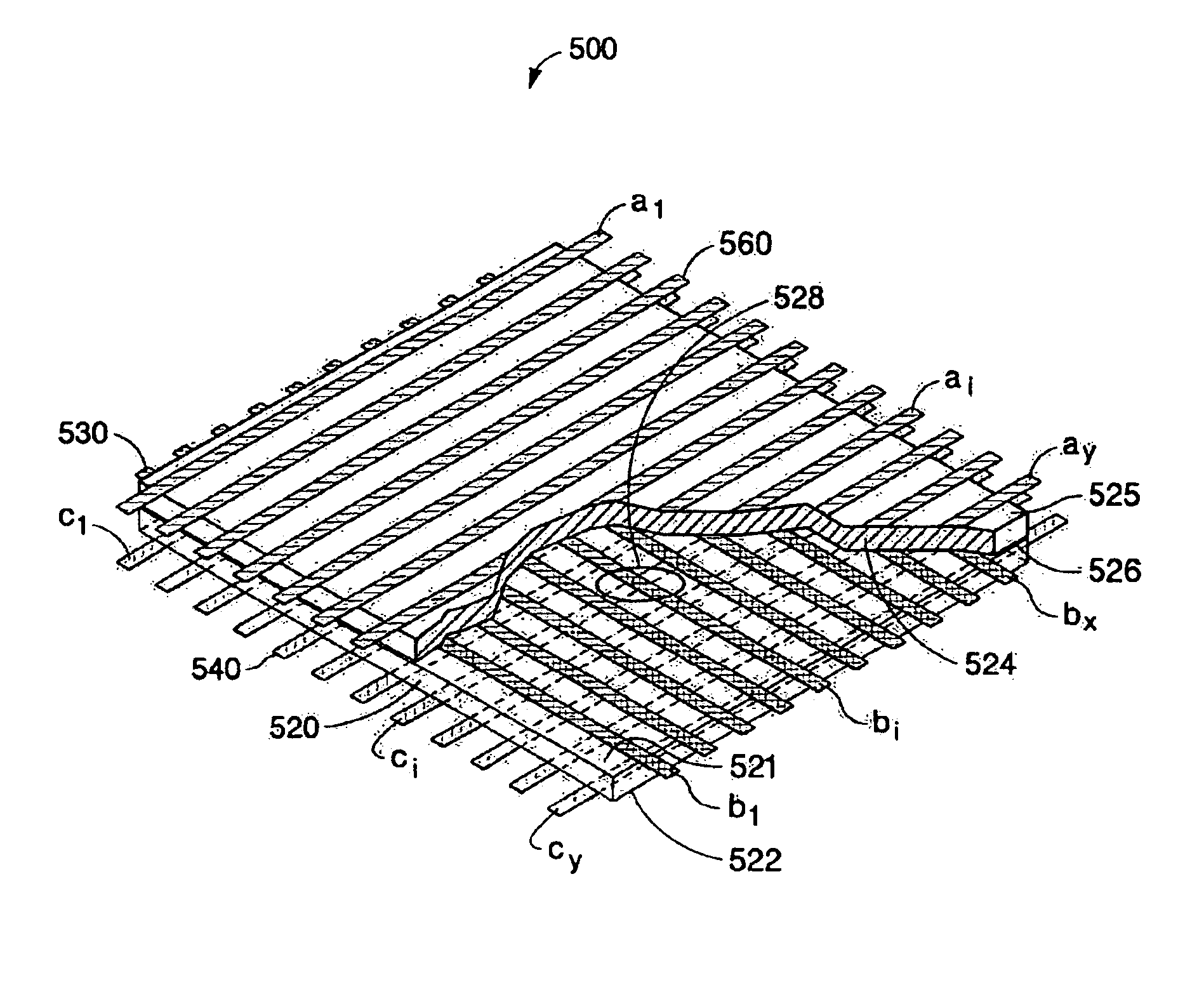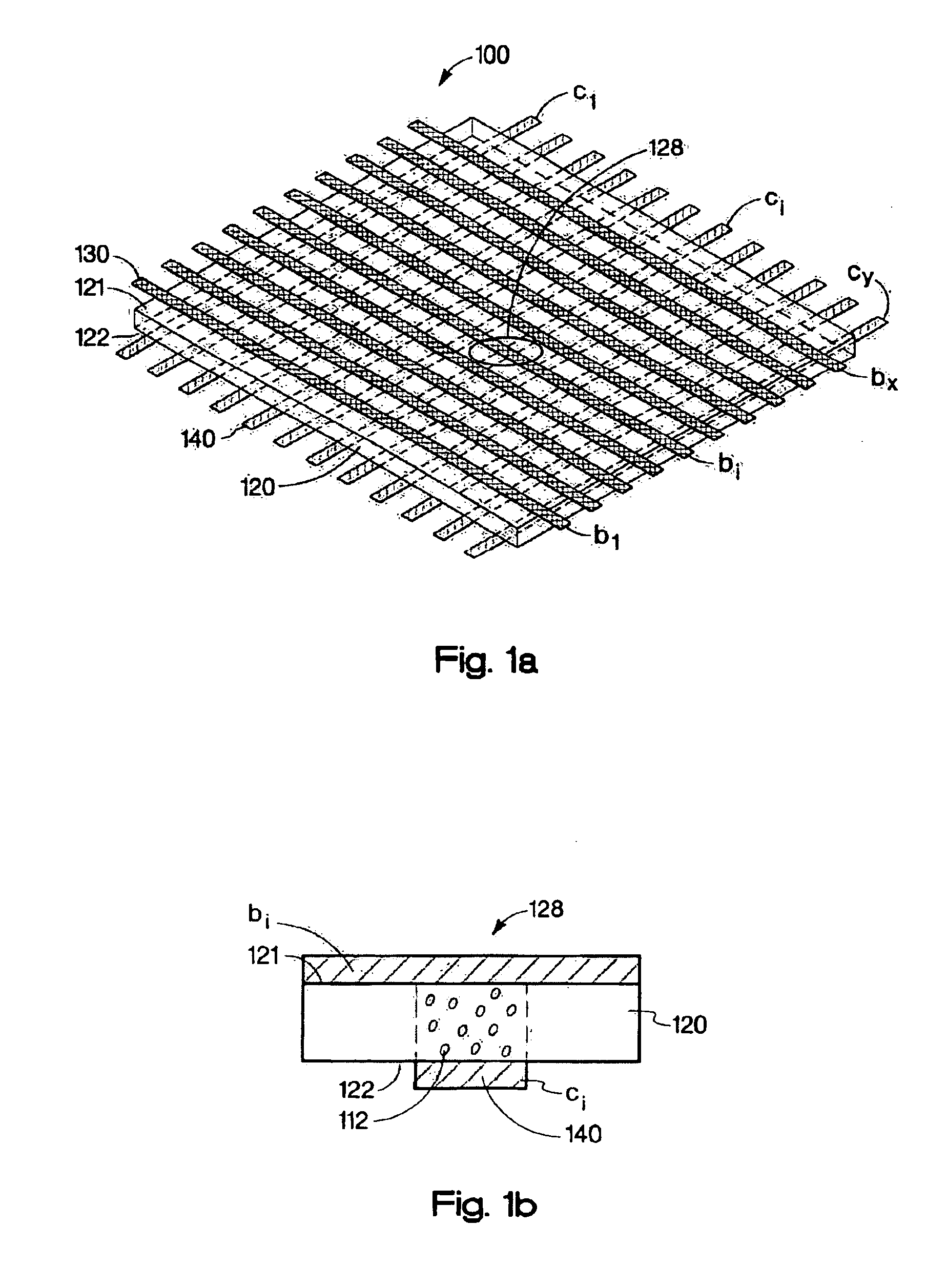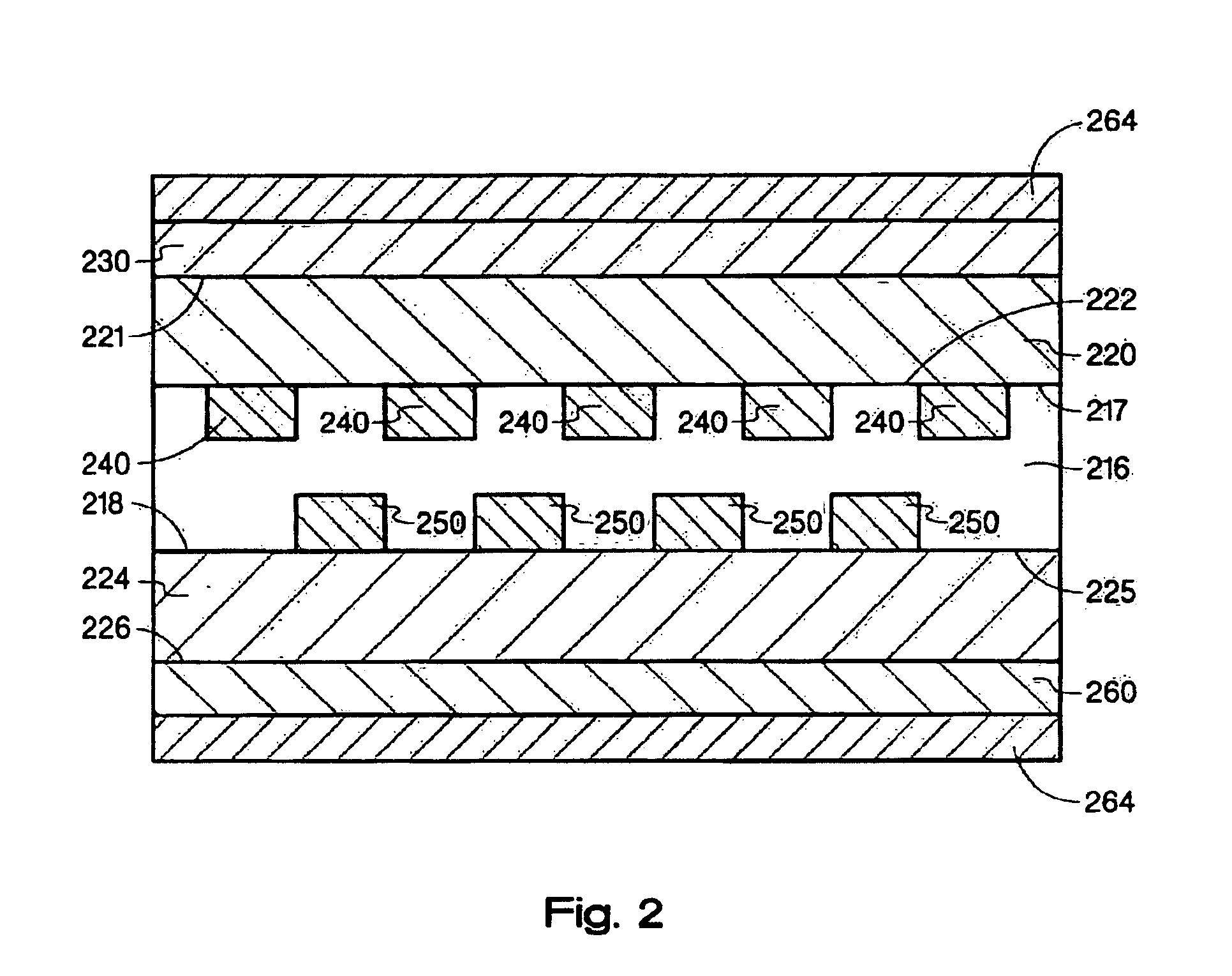Memory device having a semiconducting polymer film
a technology of semiconducting polymer and memory device, which is applied in the field of memory device having a semiconducting polymer film, can solve the problems of increasing the cost of processing, affecting the reliability of the device, and achieving the typical storage capacity of only a few megabytes
- Summary
- Abstract
- Description
- Claims
- Application Information
AI Technical Summary
Problems solved by technology
Method used
Image
Examples
Embodiment Construction
[0019]Referring to FIG. 1a, an exemplary embodiment of memory device 100 of the present invention is shown in a perspective view. In this embodiment, semiconducting polymer film 120 forms a layer that includes an organic dopant (see FIG. 1b). On the top surface, also referred to as first side 121, of semiconducting polymer film 120, a plurality of electrical conductors 130 are formed and are denoted as bj. Electrical conductors 130 are substantially parallel to each other. On the bottom surface, also referred to as second side 122, of semiconducting polymer film 120 are formed a corresponding plurality of electrical conductors 140 that are substantially parallel to each other and are substantially mutually orthogonal to electrical conductors 130. The electrical conductors 140 are denoted as ci. The combination of electrical conductors 130 and 140 form a planar orthogonal x, y matrix. Logic cell 128 includes the volume of semiconducting polymer film 120 between any two intersecting e...
PUM
| Property | Measurement | Unit |
|---|---|---|
| temperatures | aaaaa | aaaaa |
| thickness | aaaaa | aaaaa |
| thickness | aaaaa | aaaaa |
Abstract
Description
Claims
Application Information
 Login to View More
Login to View More - R&D
- Intellectual Property
- Life Sciences
- Materials
- Tech Scout
- Unparalleled Data Quality
- Higher Quality Content
- 60% Fewer Hallucinations
Browse by: Latest US Patents, China's latest patents, Technical Efficacy Thesaurus, Application Domain, Technology Topic, Popular Technical Reports.
© 2025 PatSnap. All rights reserved.Legal|Privacy policy|Modern Slavery Act Transparency Statement|Sitemap|About US| Contact US: help@patsnap.com



